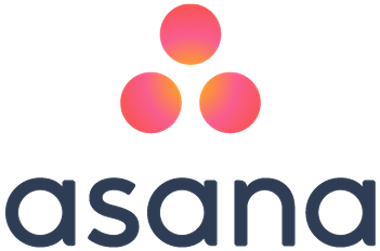
NHS AUTOMATION ACCELERATOR
bringing RPA to the NHS with the help of Asana.

bringing RPA to the NHS with the help of Asana.
It's been a challenging 18 months for the NHS, and at times it's found itself near breaking point during the heights of the coronavirus pandemic. However, that hasn't stopped technology from playing a massive part in improving services across the UK's National Health Service.
Automation Accelerator is an NHS RPA (Robotic Process Automation) Centre of Excellence based at Northampton General Hospital. The Automation Accelerator team focuses on freeing up and repurposing valuable colleague time across the NHS workforce. The introduction of RPA technology ultimately improves patient experience and has many efficiency benefits across the NHS structure.
The challenge for the Automation Accelerator team from day one was how do you launch and manage a new NHS department and engage the wider NHS about RPA technology? Lucy Hewitt, the Head of Engagement Outreach and Communications, explained how and why the Automation Accelerator Department came about.
"We started as a contractor programme, and we've ended up creating a new department within the NHS. We are currently working with 23 NHS trusts, and there's a lot of activity happening at all times.
"We're working to roll out Robotic Process Automation. It's a form of Business Process automation. So it's software robots, not physical robots.
The software robots are known as digital workers and the NHS's RPA service means that digital workers can complete tasks a lot faster than a person can. In many cases, these “workers” can run 24 hours a day, and leads to more work and improved data accuracy.
Lucy added: "What we're doing, and what we'll repurpose over the next five years using RPA, will be equivalent to about half a million hours worth of NHS time."
"We wanted a platform that was easy to adopt and wasn't going to over-complicate things or be a scary change for people in our team who have always used spreadsheets. And it just so happened that Asana ticked all the boxes!"
Lucy Hewitt, Head of Engagement Outreach and Communications
As contractors, the Automation Accelerator team used a lot of spreadsheets and emails for tracking work. It resulted in the team having a lot of duplication and frustratation with file accessibility, version control, editing multiple documents and losing changes. It also became apparent that the team couldn't communicate and allocate tasks in a visible and efficient way across the team.
For the Automation Accelerator department, visibility and workload management would be the key to a successful Asana rollout. Explaining how the department chose Asana as their defacto work management tool Lucy said:
"When we thought, "How are we going to set up this new department as an RPA Centre of Excellence?" we realised we needed to focus on productivity and efficiency being at the very heart of what we do.
"For us, it was about putting efficient processes in place from the start. We had lots of new staff with lots of different skill sets, and we wanted a suitable solution for all of the team members, no matter what they were doing, or where they were working.
"We started looking for tools that would help us increase visibility across the team and tightly map and track our deliverables and milestones. We needed to make sure that we had that clear responsibility and ownership of everything we were doing."
Asana was identified as the solution that would help solve the team’s previous problems and had the benefit of being an excellent tool for onboarding new staff who were working from home during the pandemic.
The implementation of Asana for the Automation Accelerator team was a fairly simple process. It was decided early on that Asana would be the single source of truth for the department. This meant that if the work wasn’t placed into Asana in the form of tasks and projects then the work, in theory, “didn’t exist”. Lucy explained how Asana is now used day-to-day by the Automation Accelerator team:
"We have four workstreams within the RPA Centre of Excellence. There's the outreach engagement and the communications team. We've also got a business process discovery team, and we've got a project management office as well. So each workstream was able to set up its projects and take ownership of them.
"Asana gave us visibility of everyone else's workstreams. So I was able to see what else was coming down the line. At a functional level we have our top priority milestones; then, there are sub-tasks to ensure that we hit supporting priorities at a more granular level.
"One of the projects we're currently working towards is launching a community hub. The hub is an online platform with resources and tools to help NHS staff with their automation journey. But as you can imagine, many things need to happen to make the launch a success.
"What's the launch email that's going out? What is the broader launch plan? What are all the technical things that need to happen to go live? In the past this would be in a spreadsheet but now all of that granular detail is currently tracked and measured in Asana.
"It means that I've got complete visibility of what needs to happen when, and all the individual deadlines and tasks that I've assigned to people.”
"Asana also gives me a clear indication of when a celebration is due. So I get a notification when someone has completed a task. It's a nice feeling to see your team progressing with work in real-time."
Lucy Hewitt, Head of Engagement Outreach and Communications
It’s fair to say the the implementation of Asana within the Automation Accelerator department has been critical to their success in forming and rolling out a new department. It’s also apparent that the platform has allowed the engagement and communications to reach others areas of the NHS which have historically been to know to be fragmentated and siloed.
Reflecting on the use of Asana, Lucy was keen to drive home the human benefits of managing workload and avoiding burnout across the remote teams:
"I think there was generally a lot of excitement when we were implementing Asana instead of spreadsheets. I look back at my past working life, and I think, "How did I live without it?" Work is a lot easier because it's all in one place. And that ability to tag someone and say, "Here's your task, here's the deadline, and here's the little approvals button." makes it easy to manage the team more effectively and gives people a better working experience.
"Asana has given individuals visibility of their workload versus other employees so that you can all see how busy everyone is.
"If someone in your team says, "No, actually, I'm too busy." you can see that they are, so it takes away some of the difficulties people would have within larger teams. Working from home, I think it's even more critical to see people still getting on with things.
"I asked my team for a bit of feedback on Asana and most of it was about the ease of use, the visibility of the workflows, the ability to track your tasks, and some of the fun elements. They all like the fact that when you complete a task, a unicorn runs across the screen, which provides little moments of joy thoughtout the day. When you consider these things and the efficiency and time saving, you can see why we ended up choosing Asana. I just hope more areas of the NHS will join us!"
